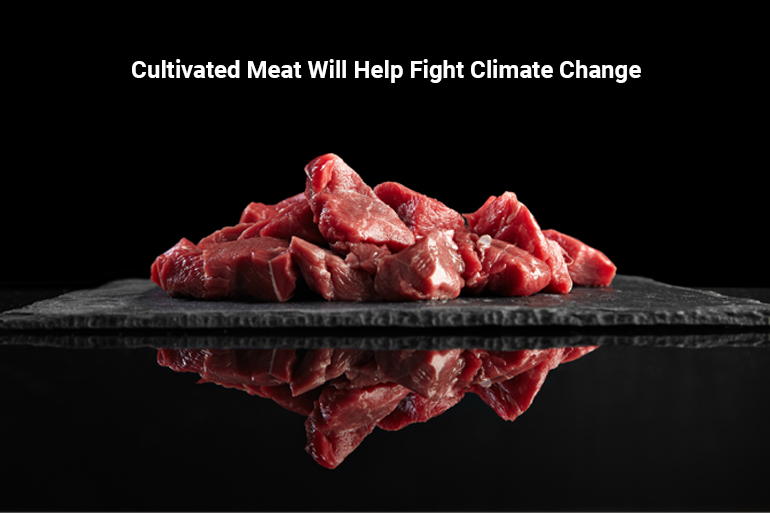Producing meat is resource-intensive and is a known polluter, releasing carbon dioxide, methane, and other gasses into the atmosphere. These gasses, along with the runoff from farms, are contributing heavily to climate change and environmental pollution. But most of us love meat and it is unlikely that we will ever see large-scale adoption of a vegan lifestyle. However, there may be hope. It is now possible to continue to enjoy real meat, but without the adverse environmental impact. Enter, cultivated meat!
What is Cultivated Meat?
Cultured meat or cultivated meat is real animal meat but without the animals. Instead of farming animals for meat, it is now possible to cultivate animal meat cells directly (including seafood and organ meat). This meat is made by acquiring stem cells from the relevant animal and then growing them into meat in bioreactors. Here, the cells are subject to the same conditions you would find in the real animal; a cell culture medium that is oxygen-rich and which contains basic nutrients such as amino acids, glucose, vitamins, inorganic salts, and other supplements.
The cells are laid out and cultivated in similar layers as in the real animal, resulting in similar taste and sensory profiles as animal-harvested meat. The cell culture medium is manipulated, along with cues from a scaffolding structure to trigger immature cells and cause them to grow into different cells such as skeletal muscle, fat, and connective tissue, which make up meat. As the layering is engineered to mimic meat, it is often indistinguishable from the real thing. This is a great development as it now makes it possible to sink your teeth into delicious meat, without environmental harm, and without animal cruelty.
Potential to Reduce Global Warming Impact by 92%
A new study has demonstrated that cultivated meat could potentially reduce the impacts of global warming by the meat industry by up to 92%. Research conducted by CE Delft also found that cultivated meat resulted in 93% less air pollution while reducing land and water usage by 95% and 78% respectively. <.span>
A Meaty Revolution on the Cards
Cultivated meat and “alternative proteins” as a whole are expected to carve out significant market share from the existing global meat and seafood industry, valued at USD 1.7 trillion. By 2020, many cultivated meat companies had begun pilot projects and commercialization will come as soon as regulatory approvals are obtained. In December 2020, Singapore become the first country to approve a cultivated meat product for sale. The shift from animal harvested meat to cultivated meat has the potential to extensively mitigate agriculture-related deforestation, biodiversity loss, antibiotic resistance, industrialized animal slaughter, and zoonotic disease outbreaks.

